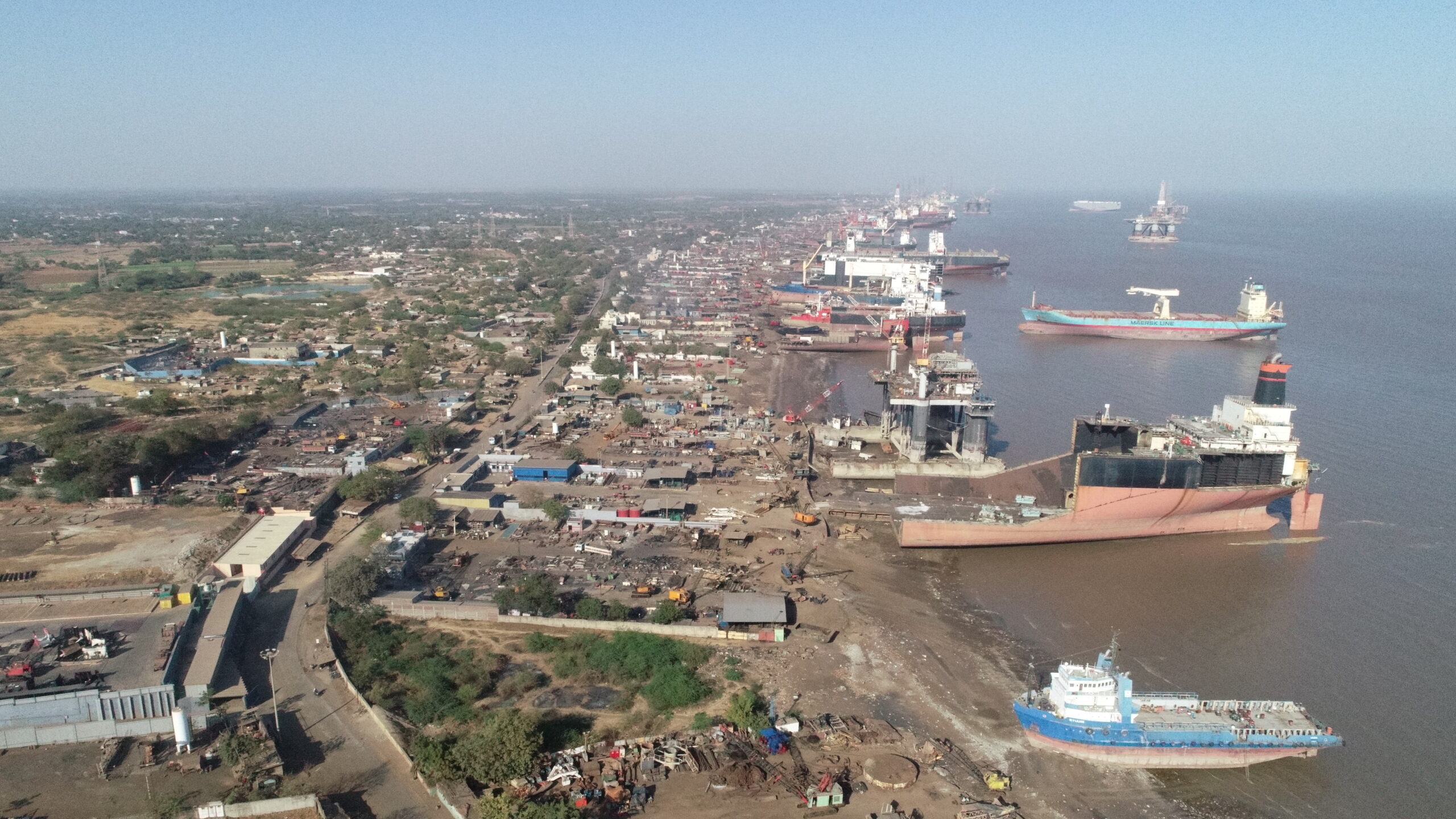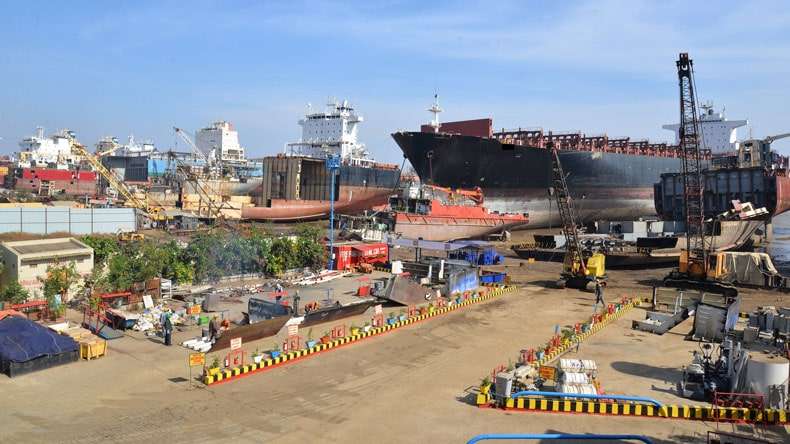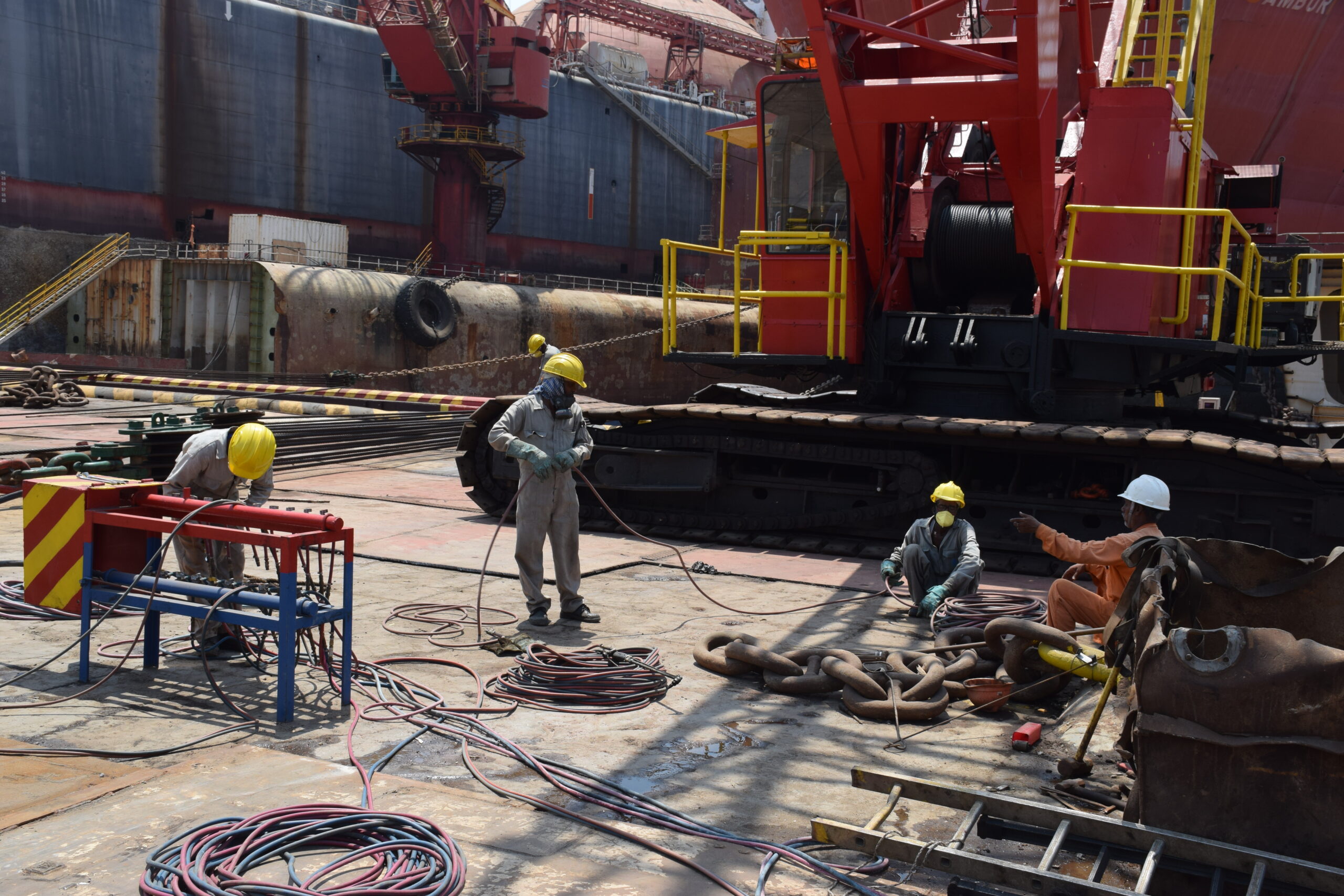The Changing Tides of Ship Recycling: A Look at the Industry’s Past Present and Future
In the year 2000, a brand-new ship named Onoe set sail from the shipyard of Japanese steelmaker NKK. It was a bulk carrier—low, flat, and stretching almost 300 meters in length—designed to transport unpackaged cargo such as cement and grain across the globe. For many years, it faithfully fulfilled its purpose, docking in ports from Yokohama to Istanbul, Newcastle to Vancouver. However, after multiple changes in ownership, the vessel, now renamed Sunny 1, met its final fate in 2022.

Having reached the end of its operational life, Sunny 1 was sold to a Bangladeshi ship recycling yard. By April 2023, it was deliberately run aground on the expansive beaches of Chittagong, where hundreds of laborers dismantled it with blowtorches, hammers, and even their bare hands. Over time, like a carcass in the desert, the ship disintegrated into the sand, its steel and components repurposed for new uses.
Sunny 1’s fate was neither unusual nor exceptional. For decades, the beaches of Chittagong have been the final resting place for thousands of end-of-life ships. In 2023 alone, workers in Chittagong dismantled nearly 40% of all ships scrapped worldwide, a trend consistent since the 1980s. Despite technological advancements in various industries, the methods and conditions in shipbreaking yards have seen little improvement.
The Perils of Shipbreaking: A History of Dangerous Labor
“Throughout the last two decades, if we look at the number of accidents—people who lose their lives or get injured—the numbers have not decreased,” says Nicola Mulinaris from NGO Shipbreaking Platform, an organization that has long campaigned against the hazardous and exploitative working conditions of the South Asian shipbreaking industry. Workers often operate in perilous conditions, with minimal safety equipment, exposed to toxic chemicals, and at risk of severe injuries or death.
Progress in improving safety and environmental standards has been slow. However, according to Mulinaris, “there’s never been so much change as now.”
Regulation, Market Forces, and Shadowy Cash Buyers
South Asia dominates the shipbreaking market, accounting for approximately 75% of global ship recycling. The primary reason: cheap labor and lax regulations. Yards in Bangladesh, India, and Pakistan can offer shipowners higher prices for their aging vessels compared to their Western counterparts, where strict environmental and safety laws increase operational costs.
However, regulations imposed by the European Union have attempted to curb the worst practices. Since 2019, the EU has mandated that ships flying member-state flags must be recycled at facilities meeting strict environmental and safety standards. As a result, European shipowners face two choices:
- Sell their ships to one of the 45 EU-approved recycling yards at a lower rate.
- Offload them to a third-party intermediary, commonly known as a cash buyer.
Cash buyers operate as intermediaries, purchasing vessels from shipowners, reflagging them to avoid regulatory scrutiny, and then selling them to non-compliant South Asian yards. While this practice is illegal under EU law, enforcement has historically been weak. Only in recent years have authorities begun prosecuting those involved in these illicit transactions.
A Surge in Ship Recycling Looms
While the EU’s strict regulations have made irresponsible recycling riskier for European shipowners, they are not the primary reason for the recent decline in ship recycling. According to Lloyds List Intelligence, demolition rates have dropped due to high freight rates and lower steel prices in South Asia, prompting shipowners to retain their vessels longer than usual.
This trend is set to reverse dramatically. “I expect a massive increase in volumes from next year,” said Anil Sharma, CEO of the cash buyer GMS, in a 2024 interview with Lloyds. Mulinaris concurs, predicting that the number of ships reaching scrapyards will “triple or quadruple in the next five years.”
If past patterns persist, 70–80% of these ships will end up in South Asian yards. However, a new wave of technological innovation may allow European and Turkish recycling facilities to reclaim a portion of the market.
Innovation in Ship Recycling: A Glimmer of Hope
For decades, labor-intensive shipbreaking has made it nearly impossible for high-cost European and Turkish yards to compete with their South Asian counterparts. However, automation and technological advancements may soon change this dynamic.
One promising initiative is the SHEREC project, led by Evren Samur, an Associate Professor at Boğaziçi University in Istanbul and R&D Director at the robotics company HKTM. SHEREC aims to revolutionize ship recycling by integrating automation and robotics. The project’s core components include:
- Drones: Used to map hazardous materials within a ship, providing detailed documentation for safe dismantling.
- Artificial Intelligence: AI-driven algorithms will analyze ship documentation and drone data to generate an optimized recycling plan.
- Robotic Cutters: Two specialized robots—one operating inside the hull and the other on the ship’s exterior—will execute the dismantling process with precision and safety.
SHEREC is currently in its second year of development. The first year focused on conceptual design, while 2025 and 2026 will involve prototype development and laboratory-scale testing. By 2027, the team plans to conduct real-world tests on an actual ship at a recycling yard.
SHEREC is not alone in its efforts. German firm Leviathan has developed a cutting system using high-pressure water jets, while Dutch company CMT is advancing a fully automated wire-cutting technique. These innovations, driven in part by strict EU regulations, could make safe and environmentally responsible shipbreaking more economically viable.
Regulation as a Catalyst for Change
It is often argued that regulation stifles innovation, but the ship recycling industry tells a different story. The EU’s stringent environmental and safety rules have spurred investment into cutting-edge technologies, pushing the sector toward more sustainable practices. If these advancements prove successful, they could shift the industry away from hazardous manual labor toward a safer, more efficient, and environmentally friendly future.
For now, however, the beaches of Chittagong remain the final resting place for the world’s aging fleet. Workers will continue to break down ships with hammers and torches, exposed to dangers that have persisted for decades. Whether technological advancements and regulatory enforcement can finally change this reality remains to be seen. One thing, however, is certain: the tide is turning in the shipbreaking industry, and the next decade will be critical in determining its course.
Author: shipping inbox
shipping and maritime related web portal








